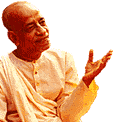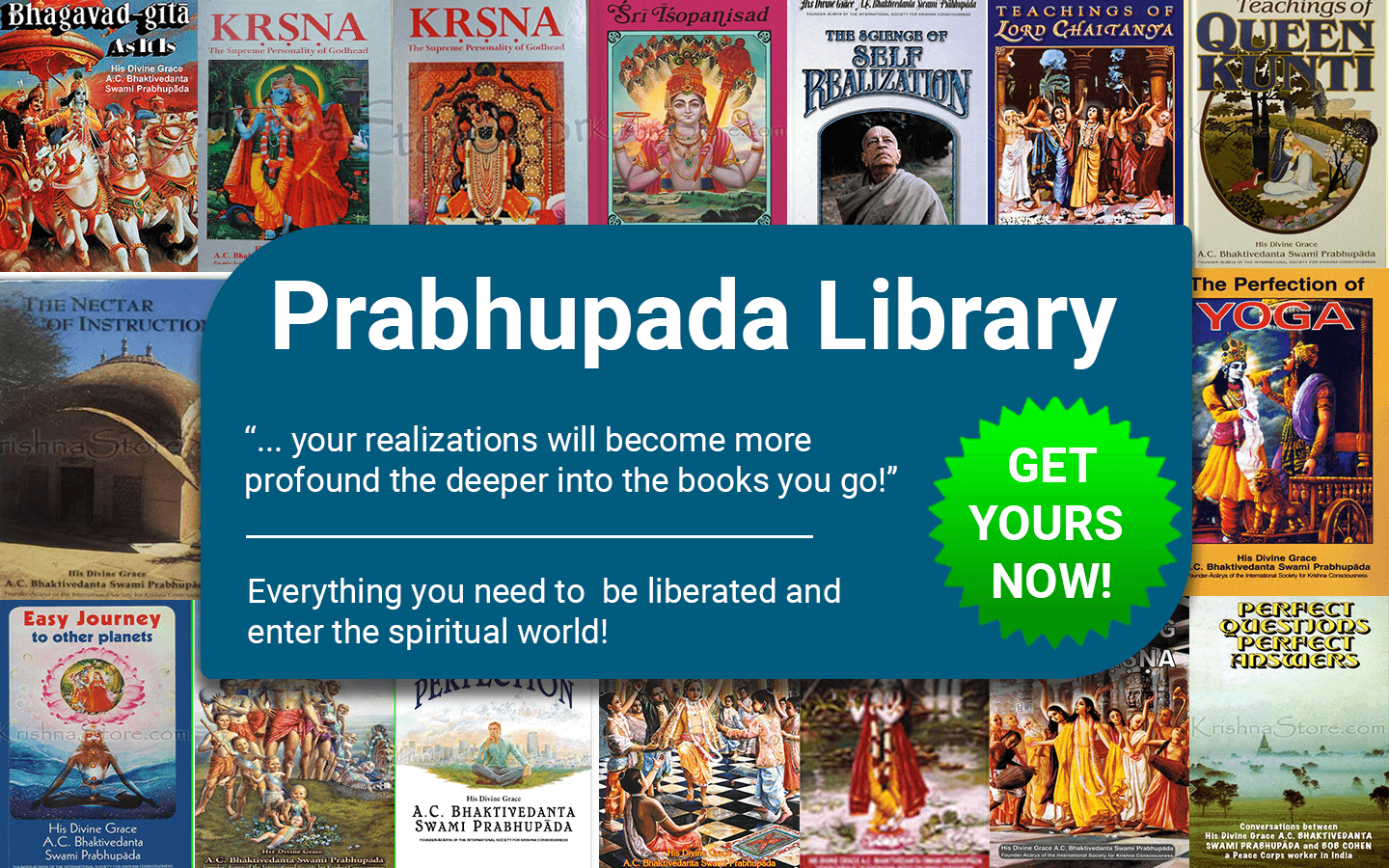Chapter 11: The Universal Form
Bg 11.52
TEXT 52
sri-bhagavan uvaca
su-durdarsam idam rupam
drstavan asi yan mama
deva apy asya rupasya
nityam darsana-kanksinah
su-durdarsam idam rupam
drstavan asi yan mama
deva apy asya rupasya
nityam darsana-kanksinah
SYNONYMS
sri bhagavan uvaca—the Supreme Personality of Godhead said; sudur-darsana— very difficult to be seen; idam—this; rupam—form; drstavan asi—as you have seen; yat—which; mama—of Mine; devah—the demigods; api asya—also this; rupasya—of the form; nityam—eternally; darsana-kanksinah—always aspire to see.
TRANSLATION
The Blessed Lord said: My dear Arjuna, the form which you are now seeing is very difficult to behold. Even the demigods are ever seeking the opportunity to see this form which is so dear.
PURPORT
In the forty-eighth verse of this chapter Lord Krsna concluded revealing His universal form and informed Arjuna that this form is not possible to be seen by so many activities, sacrifices, etc. Now here the word sudurdarsam is used, indicating that Krsna's two-handed form is still more confidential. One may be able to see the universal form of Krsna by adding a little tinge of devotional service to various activities like penance, Vedic study and philosophical speculation, etc. It may be possible, but without a tinge of bhakti, one cannot see; that has already been explained. Still, beyond that universal form, the form of Krsna as a two-handed man is still more difficult to see, even for demigods like Brahma and Lord Siva. They desire to see Him, and we have evidences in the Srimad-Bhagavatam that when He was supposed to be in the womb of His mother, Devaki, all the demigods from heaven came to see the marvel of Krsna. They even waited to see Him. A foolish person may deride Him, but that is an ordinary person. Krsna is actually desired to be seen by demigods like Brahma and Siva in His two-armed form.
In Bhagavad-gita it is also confirmed that He is not visible to the foolish persons who deride Him. Krsna's body, as confirmed by Brahma-samhita and confirmed by Himself in Bhagavad-gita, is completely spiritual and full of bliss and eternality. His body is never like a material body. But for some who make a study of Krsna by reading Bhagavad-gita or similar Vedic scriptures, Krsna is a problem. For one using a material process, Krsna is considered to be a great historical personality and very learned philosopher. But He isn't an ordinary man. But some think that even though He was so powerful, He had to accept a material body. Ultimately they think that the Absolute Truth is impersonal; therefore they think that from His impersonal feature He assumed a personal feature attached to material nature. This is a materialistic calculation of the Supreme Lord. Another calculation is speculative. Those who are in search of knowledge also speculate on Krsna and consider Him to be less important than the universal form of the Supreme. Thus some think that the universal form of Krsna which was manifested to Arjuna is more important than His personal form. According to them, the personal form of the Supreme is something imaginary. They believe that in the ultimate issue, the Absolute Truth is not a person. But the transcendental process is described in Bhagavad-gita, Chapter Two: to hear about Krsna from authorities. That is the actual Vedic process, and those who are actually in the Vedic line hear about Krsna from authority, and by repeated hearing about Him, Krsna becomes dear. As we have several times discussed, Krsna is covered by His yoga-maya potency. He is not to be seen or revealed to anyone and everyone. Only by one to whom He reveals Himself can He be seen. This is confirmed in Vedic literature; for one who is a surrendered soul, the Absolute Truth can actually be understood. The transcendentalist, by continuous Krsna consciousness and by devotional service to Krsna, can have his spiritual eyes opened and can see Krsna by revelation. Such a revelation is not possible even for the demigods; therefore it is difficult even for the demigods to understand Krsna, and the advanced demigods are always in hope of seeing Krsna in His two-handed form. The conclusion is that although to see the universal form of Krsna is very, very difficult and not possible for anyone and everyone, it is still more difficult to understand His personal form as Syamasundara.
Copyright (c) 1972 by His Divine Grace A.C. Bhaktivedanta Swami Prabhupada











